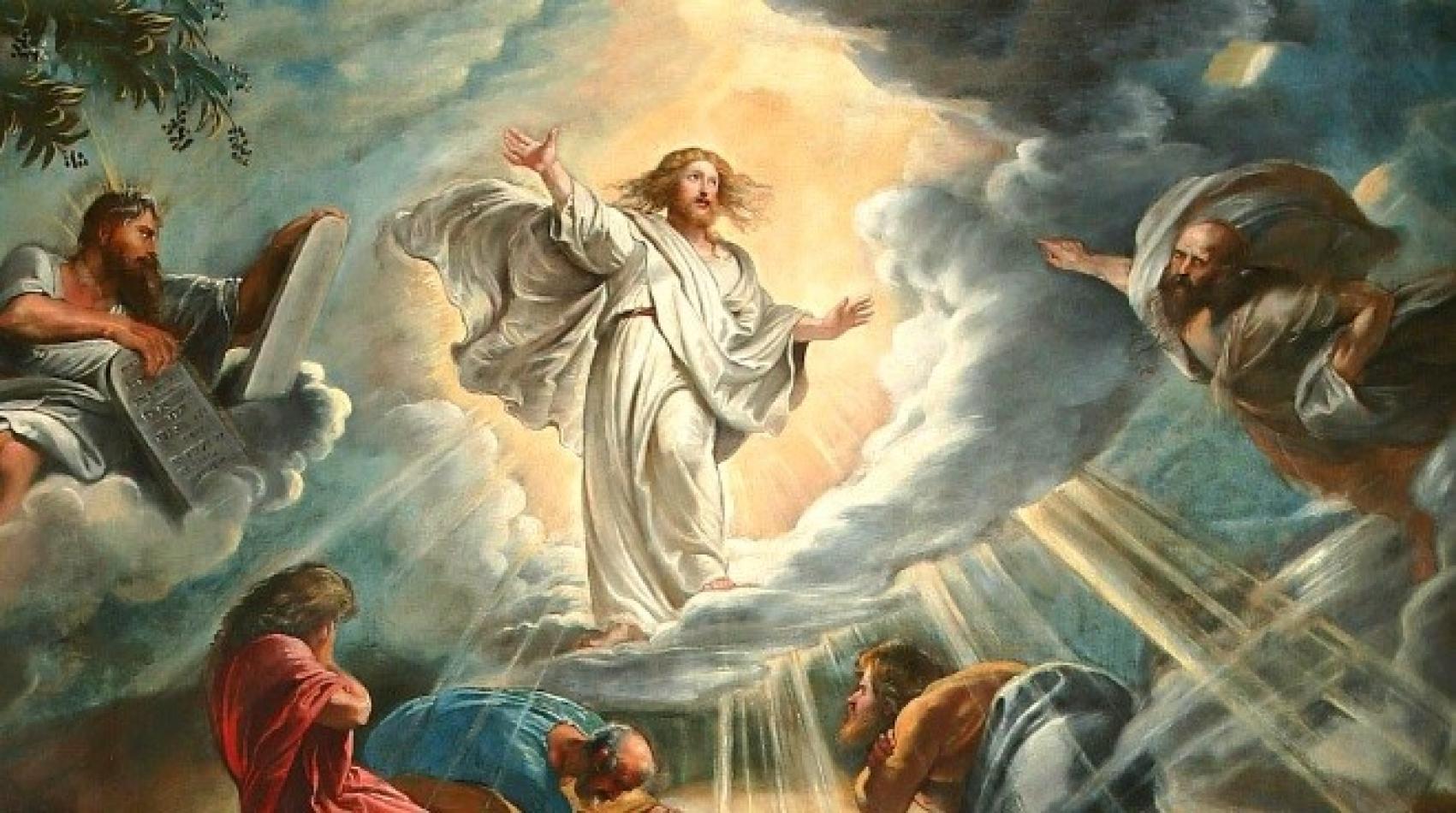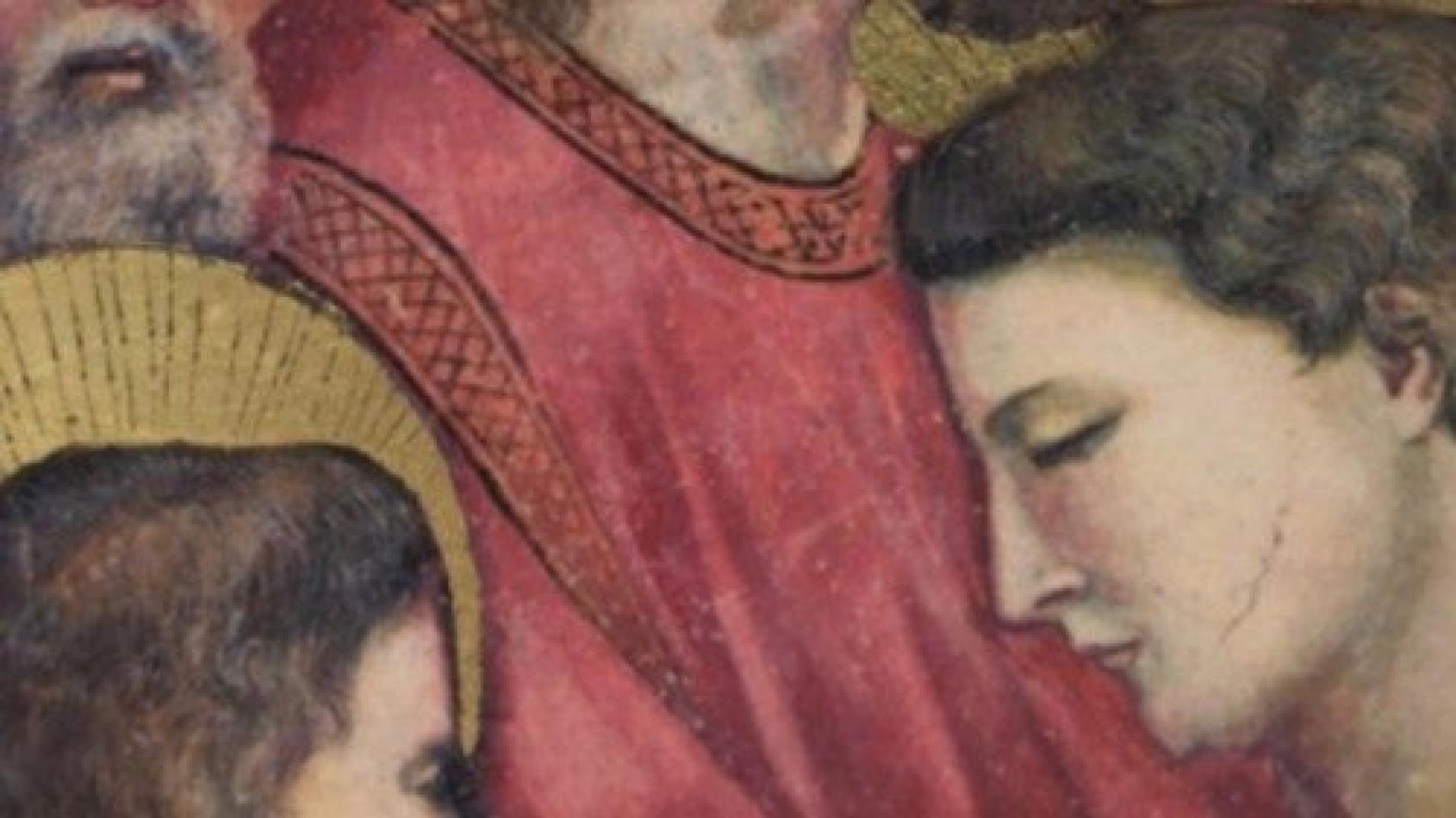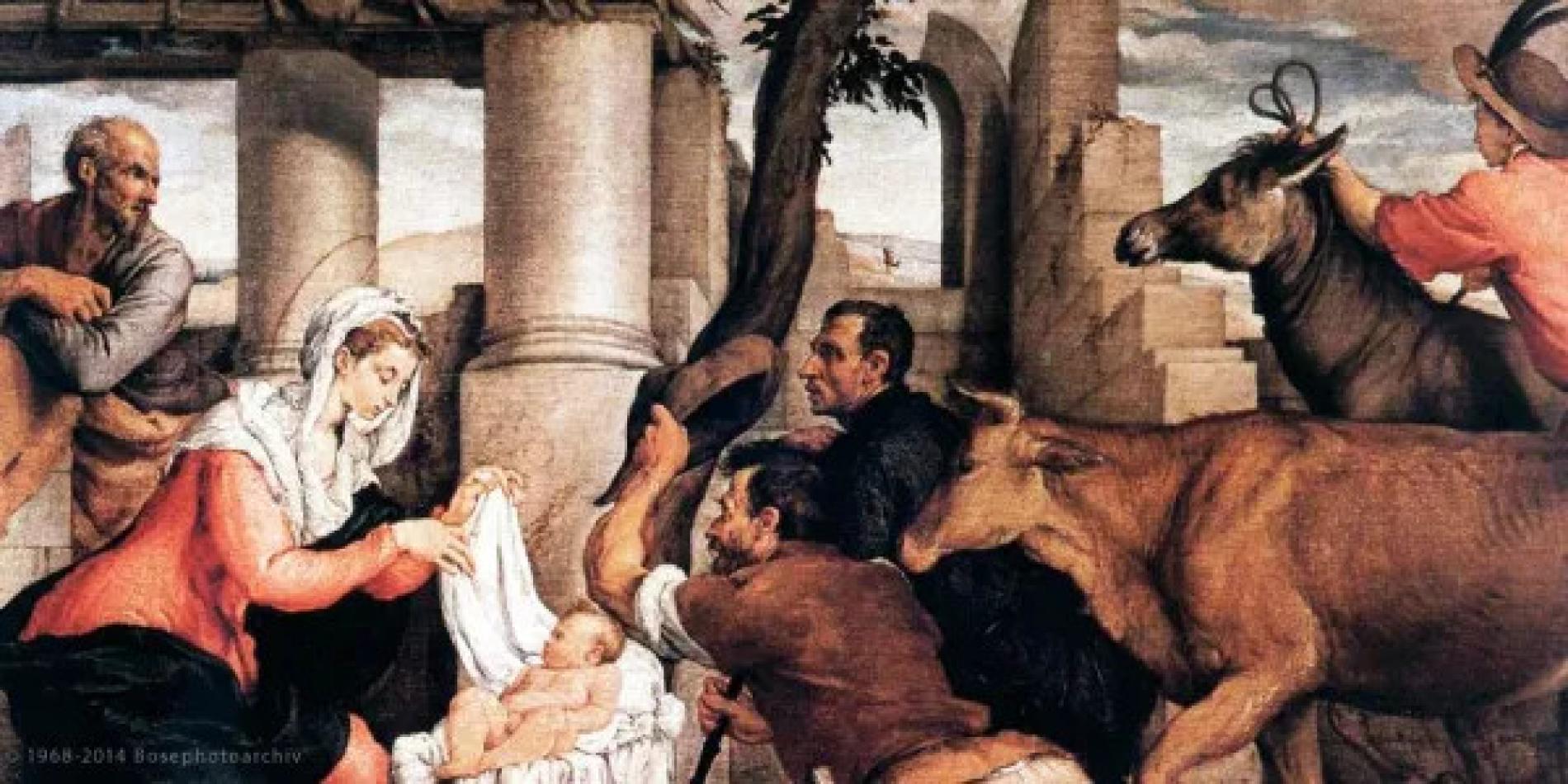Daniel Comboni
Comboni Missionaries
Institutional area
Other links
Newsletter
Every year on the second Sunday of Lent, we are offered the subject of Jesus’ transfiguration. The message of this passage is not immediately clear and easy to grasp because it is transmitted with a symbolic language and images that require an explanation. (...)
Gospel Reflection
Mark 9: 2-10
Every year on the second Sunday of Lent, we are offered the subject of Jesus’ transfiguration. The message of this passage is not immediately clear and easy to grasp because it is transmitted with a symbolic language and images that require an explanation.
The scene is set in a secluded place, on a high mountain where Jesus led three of his disciples (v. 2). They will be witnesses of his agony in Gethsemane (Mk 14:33). Mark stresses the fact that “they were alone.”
Jesus acts as the rabbi who, when they wanted to reveal a secret or convey a very important teaching, used to retreat with the disciples in an isolated place, away from prying ears, to avoid being heard by those who were not able to understand or might misunderstand.
Also on Sinai the word of God was not directly addressed to all the people. Moses went up to God, for the first time alone (Ex 19:2f). Then he took with him three remarkable persons: Aaron, Nadab and Abihu (Ex 24:1). The place of the manifestations of the Lord was not accessible to all. They were required necessary dispositions and great sanctity to approach the Lord.
The fact that Jesus reserved his revelation to some disciples and that he eventually told them not to disclose it (vv. 9-10) indicates they were given a share of a very significant experience but still too high to be implemented by all.
The revelation was made on “a high mountain” (v. 2) that the Christian tradition has identified with Tabor, the mountain covered with pines, oaks and terebinth, that crops up, isolated in the middle of the extensive plain of Esdraelon. Since ancient times, on its top was an altar where sacrifices were offered to the pagan gods. Today the site invites to meditation, reflection, prayer and pilgrims who visit it feel almost naturally inclined to raise their gaze and thought to God.
No matter how evocative this experience can be, it should be noted that the gospel text does not speak of Tabor, but of “a high mountain.” This expression has clear biblical references. The manifestations of the Lord and the great encounter of man with God in the Bible are located on the mountain. Moses (Ex 24:15ff) and Elijah (1 Kgs 19:8), the same characters that appear during the transfiguration, have received their revelations on the mountain. More than a physical place, the mountain is the time in which the intimacy with God reaches its climax. It is that sublime experience that the mystics call union of the soul with God, the one in which the person, almost dissolving in his Lord, feels identified with his thoughts, feelings, words and actions.
Jesus leaves the plains where men often follow principles that are contrary to those of God and leads a few disciples “to the top.” He wants to move them away from the thoughts and beliefs of men to introduce them in the innermost thoughts of the Father, in His inscrutable designs on the messiah. Luke is even more explicit when he refers the theme of Jesus’ conversation with Moses and Elijah. He says that these, who appeared in their glory, spoke with him of the gift of life that Jesus was going to do (Lk 9:31). This is the shocking revelation that some of the disciples, not all, will one day receive from heaven.
“The white clothes” (v. 3) outwardly manifest the identity of Jesus. The color white was the symbol of God’s world; it was a sign of celebration and joy. It was said that in the kingdom of God, the elect would wear white robes which “send sparks like rays of the sun.” In Revelation the image is resumed: the elect in heaven appear to the seer “clothed in white” (Rev 7:13).
“Moses and Elijah” (v. 4) are two famous characters in the history of Israel. The first is the mediator which God used to free his people and to give them “the Torah,” the Law. He is introduced into the scene of the Transfiguration to testify that Jesus is the prophet Moses announced when, before dying, he promised to the Israelites, “The Lord will raise up for you a prophet like myself from among the people, from your brothers, to whom you shall listen” (Deut 18:15).
The invitation to listen to him, which is at the end of the story (v. 7), confirms it. Elijah, in turn, is the first of the prophets who had been taken to heaven (2 Kgs 2:11-12). It was thought that he would return before the coming of the Messiah. In the scene of the Transfiguration, he also enters as witness. He declares, on behalf of all the prophets, that Jesus is the long-awaited Messiah.
“The tents too” (v. 5) that Peter wants to build have a symbolic meaning.
At the end of each year, at the end of the harvest season, the Feast of Tabernacles is celebrated in Israel. It lasted an entire week. Booths were built to commemorate the years in the wilderness, to call to mind the works done by the Lord in the past. This feast, however, was also an invitation to look “toward the future.” The prophet Zechariah had announced that at the coming of the Messiah, all the nations of the earth would be gathered together in Jerusalem to celebrate together the Feast of the Tabernacles (Zech 14:16-19). Referring to this oracle, the rabbis described the time of the Messiah as a perennial “feast of booths.” Asking to build three tents, Peter refers to this symbolic meaning of the booths. He believes that now is the time of God’s kingdom, the time for rest and perennial celebration promised by the prophets. He did not understand the true meaning of the scene he is witnessing. He continues to cultivate the illusion that it is possible to enter the kingdom of God without going through the gift of life. Mark tells us: “He did not know what to say; they were overcome with awe” (v. 6).
“Fear” does not mean fear in the face of danger. It is difficult, indeed, to imagine the disciples contemporarily ecstatic with joy (v. 5) and upset by terror (v. 6). When the Bible speaks of fear in front of a manifestation of the Lord it refers to marvel, wonder that captures anyone who enters in contact with God’s world.
“The cloud and the shadow” are images very common in the Old Testament. They are used to indicate the presence of God. The Lord appears to Moses in a “dense cloud” (Ex 19:9). A cloud accompanied the Israelites in the wilderness (Ex 40:34-39) and covers the tent where Moses met the Lord (Ex 33:9-11). It is the sign of God’s presence.
At the end of the scene of the transfiguration, from the cloud came a voice: it is the interpretation that God gives to the whole scene (v. 7).
After explaining the various symbols, let us try to make “a summary of the message” that the extraordinary experience of the three disciples wants to communicate to us.
The account of the Transfiguration takes exactly the center of the Gospel of Mark. From the beginning, the disciples asked the question about the identity of Jesus (Mk 1:27; 4:41; 6:2-3) and, to a certain extent, they also began to realize that he was the Messiah. However, they were still confused. They shared the prevailing opinion among the people that the Messiah would be a king able to establish, in a miraculous and immediate way, the kingdom of God on earth.
This belief emerges from the words of Peter, who wants to put up three tents. He believes that the kingdom of God has come. To be participants it is not necessary to pass through death.
In a particularly significant moment of their lives, the three privileged disciples were introduced by Jesus into God’s thoughts. They have enjoyed an enlightenment that made them understand the true identity of the Master and the goal of his journey. He would not be the awaited glorious king but a messiah opposed, persecuted and killed. However, his ultimate fate would not have been the tomb, but the fullness of life.
The transfiguration was an extraordinary spiritual experience in which Jesus tried to convince them that only those who give their lives for the sake of love fully realized it.
One cannot get into the kingdom of God through shortcuts as Peter would have wanted to do. It is necessary for every disciple to boldly assume the provision of the Master, and agree to give life. Was the experience of the mountain enough to make the three disciples assimilate this truth?
The concluding remark of the Evangelist: “They kept this to themselves, although they discussed with one another what ‘to rise from the dead’ could mean.” This leaves us to understand that they were stunned, not convinced, of the revelation received.
It is clear that they failed to understand that Jesus was going to give life. God was revealing all his glory, all his love for man. Only the light of Easter and the experiences with the Risen Lord will open wide their eyes.
Fernando Armellini
https://sundaycommentaries.wordpress.com
THIS IS MY BELOVED SON. LISTEN TO HIM
Lectio
Last Sunday, although the Gospel was very short, it offered a number of images and concepts that allowed us to approach Lent with a clear idea of the path we are going to follow. This Sunday is also extremely rich, enabling us to discover hidden nuances of past celebrations and glimpse the end and purpose of Jesus’ mission. Just in case we are frightened by Lenten penance, Jesus’ shining face will provide us with a bit of solace. As on other Sundays, I will limit my task to giving you some hints to grasp the content of the texts, for they are too dense to be developed in full.
The “hurried” tone at the beginning of the Gospel must already sound familiar. It is typical of Mark to be in a hurry and to take for granted that his readers know the context of his stories. Besides, the lectionary has omitted the first words of the passage, although they are extremely important: “After six days…,” or “Six days later…” (9: 2). The reader cannot but ask “After what?” Of course, the answer is, just after Jesus had announced his death and resurrection as the way he would fulfill his Messianic vocation. The disciples did not understand the message, for their attention was focused only on the hard side of the announcement: Jesus’ passion and death. Peter was the one who dared reject Jesus’ plans openly: “he took him aside and began to rebuke him” (8:32). The truth is, nobody could understand that the Messiah, the heir to David’s throne, who would set his people free from Roman domination, should undergo what Jesus had announced. “If that is the future of our leader, what will happen to us? What will our own future be?” The most optimistic words for their feelings could be disconcertment and disappointment.
The Transfiguration is a moment of relief and solace, for the disciples did not seem to have heard or understood the phrase “rise after three days.” The three disciples invited to witness that vision were those closest to Jesus, those who were with him in Jairus’ house and saw what happened to the girl (Mark 5:35-43). But neither that sign nor this made them stronger in faith or fidelity. When put to the test in Gethsemane, they were not able to stay awake and pray with Jesus (14:32-42). For us, who know the entire story, the parallel with Jesus’ baptism is obvious, and the presence of Elijah and Moses, together with the voice of the Father, ratified Jesus as his “beloved Son.” We might expect the three disciples to have experienced something deeper than the dazzling images. Not at all. They were so terrified that we may doubt if they understood the command: “Listen to him.”
This Sunday’s liturgy takes us a step further in our understanding of our Lenten preparation for Easter. It makes us see, once again, that the way in which we look at the history of salvation always falls short of its full meaning. The Transfiguration is just a glimpse of the real end of the “path to Jerusalem,” the resurrection of the Lord, a glory that cannot be attained but by obedience, “listening” to the Father’s will manifested in him. So when the disciples (not only the Twelve, but we, who are bidden to take our cross and follow Jesus), will have to face “anguish, or distress, or persecution, …or the sword,” we know that nothing will separate us from the love God shown when he handed his beloved Son over for us, the One who died, was raised and intercedes for us.
Meditatio
After so many details, a few simple but hard to answer questions for our Meditatio. Quite often non-believers criticize us Christians for insisting too much on sin, guilt, penance and atonement, as though our faith were a series of commands and prohibitions destined to make our lives unhappy. And we must admit that we sometimes offer a gloomy image of ourselves. To what extent does that image represent our lack of perspective about the Paschal mystery, the real center of our faith? Is Lent just a time of “mortification” instead of an occasion to prepare ourselves to celebrate the risen Christ?
You must have noticed I have not mentioned the passage from Genesis. We can find a number of interpretations to make Abraham’s test and his obedience seem acceptable. You can find them quite easily on the web. But allow me a question that makes me feel deeply uneasy: are we conscious of the consequences that our legitimate decisions, made “in conscience,” can have on the lives of other people? Do we ever dare look, with a critical approach, on some of our convictions, so easily identified with God’s will?
Oratio
Pray for those who find themselves in situations of darkness and distress because of their fidelity to Jesus and the Gospel: that they may experience a glimpse of the Paschal light to help them on their way.
Let us pray for the Church or community we belong to: that we may be messengers of the joy of Easter, even if we take this time of Lent as a period devoted to convert ourselves to the Lord by “almsgiving, prayer and fasting.”
Contemplatio
As you have seen, the passage of the Transfiguration is directly related to Jesus’ announcement of his passion and resurrection. I suggest some “extension” to the readings of today’s liturgy. Read again Mark 8:27-38 and Romans 8:28-39. You may find in those passages a comforting approach to understand “the cost of discipleship,” which is not a simple path of renouncement but an exercise of confidence in God’s limitless love for us.
Reflections written by Rev. Fr. Mariano Perrón,
http://www.americanbible.org
Transformed in the Struggle
Luke 9:28-36
Kathleen Rushton
Kathleen Rushton’s reading of Luke 9:28-36 highlights the commitment that Jesus, and all disciples, give to under-standing God’s mission in the world.
Mark and Matthew tell us Jesus “was transfigured before them”. Luke describes this event differently — Jesus prays, his conversation with Moses and Elijah is revealed and the disciples “were heavy with sleep” (Lk 9:28-33). I will explore the possibility that the disciples are being offered both an example of Jesus praying at a time of difficulty and insights into his intimate relationship with God.
This incident happened as the Galilean ministry of Jesus came to a climax around questions about his identity and the direction in which God’s mission was taking him. Disciples had asked: “Who is this …?” (Lk 8:25) after he calmed the storm. King Herod had asked: “Who is this …? (Lk 9:9). The focus moves to the disciples. A new phrase in their formation has begun. They are to learn what following Jesus and his mission really meant.
Context of Mission
Jesus called the twelve to commission them on God’s mission to do what they had seen him doing — healing, exorcisms and preaching (Lk 9:1-2). He instructed them: “Take nothing for the way, neither staff, nor bag, nor bread, nor money, nor have two tunics …” (Lk 9:3). Scripture scholar Michael Trainor links this instruction to a “disposition towards creation and a resistance to the temptation to power, status and privilege” with which Jesus was tempted by the devil at the beginning of his ministry. The twelve’s focus is to be on God’s mission. They are to take no bag of possessions, to rely on God’s providence for bread, to carry only one tunic and to have no money to purchase Earth’s goods or satisfy their needs.
The disciples return from mission and tell Jesus all about it. Then, taking them with him, Jesus “withdrew privately to a city called Bethsaida” (Lk 9:10). Crowds followed. Jesus welcomed them. Later, the disciples wanted Jesus to send the crowds away to get lodging and food. He challenged them to respond to the situation: “You give them something to eat.” With the hospitality of the superabundance of God, Jesus fed the crowds (Lk 9:12-17).
The Big Question
As often happens in Luke, significant developments begin with Jesus at prayer by himself “with only the disciples near him” (Lk 9:18). Then he asked the big question: “Who do the crowds say I am?” Then of the disciples: “But who do you say I am?” Peter’s answer is spot on: “You are the Christ (the Anointed).” When Jesus talked for the first time about his coming suffering, death and resurrection, neither Peter, nor any disciples, disputed with him (contrast with Mk 8:32-33; Mat 16:22-23) when he explained that his being the Messiah would mean suffering. Suffering would be, also, the lot of the disciples (Luke 9:23-27). His followers are to deny themselves and “take up their cross daily and follow me”. “Daily” is Luke’s addition. Jesus was talking about a spirituality for the long haul.
That events of Luke’s account are found between this first (Lk 9:22) and the second mention of suffering, death and resurrection (LK 9:44; third, 18:31-33) which seem to be designed to help the disciples with the difficult instruction Jesus gives them.
Jesus Prays
About eight days later, with “Peter, James and John, Jesus goes up the mountain to pray”. The mountain, a place rich in biblical symbolism, is where Jesus communicates with God. A pattern of Jesus’s intimacy with God in solitude on a mountain is developed: before he selected the twelve (Lk 6:12) and just before his passion and death (Lk 22:39-46). Jesus is presented as praying in Luke, more than in the other Gospels.
Now, the focus is on the experience of Jesus. He prayed about the problem of where God’s mission was taking him. His direction was set when in his hometown synagogue and in the tradition of the prophets, he proclaimed: “The Spirit of the Lord is upon me, because God has anointed me to bring good news to the poor … sent me to proclaim release to the captives and recovery of sight to the blind, to let the oppressed go free, to proclaim the year of the Lord’s favour” (Lk 4:16-19).
But opposition abounded. His townsfolk tried to “hurl (Jesus) off a cliff” (Lk 4:28-30). Demons rebuked him. Scribes and Pharisees questioned him, accused him of blasphemy, of breaking the sabbath and were “filled with fury and discussed … what they might do to Jesus” (Lk 5:21; 6:11). We can use the language of Catholic Social Teaching to describe Jesus’s sermon of the plain as an “option for the poor”. Blessed are the poor, the hungry, those who weep, the reviled, excluded, defamed. Jesus declared, “Woe to you rich … who are full … happy now … when people speak well of you” (Lk 6:20-26).
Why Suffering and Death?
From a historical point of view, Jesus suffered and died because he stayed faithful to his role in God’s mission with a courage that did not quit. He gave hope and good news to poor, marginalised people. This was dangerous to do in first century Palestine which was occupied and dominated by imperial Rome in collusion with local elites — Herod, scribes and religious leaders.
Was Jesus unaware of what was going on? Did he want to die? Of course not. He had a deep-seated commitment to his calling of who he was and what he was called to do. Yet Jesus was human. He struggled. He saw the writing on the wall. We can think of contemporary women and men who stayed faithful despite danger and the risk of death. For example, Dorothy Stang in the Amazon rainforest; Oscar Romeo and Jean Donovan in El Salvador; Dietrich Bonhoeffer in Nazi Germany; Martin Luther King in the United States of America; and Doctors without Borders in Syria.
My Chosen
In doubt and bewilderment, Jesus prayed. Things came together. His face lit up — “the appearance of his face changed”. His glory, which the disciples saw, was the radiant joy that came with resolution of a horrendously troubling situation. Divine power flowed through the person of Jesus in the mighty wonders of God’s mission. Now divine power transformed him completely. His clothing became “dazzling white”. He saw things from a different perspective.
Moses and Elijah talked with Jesus about his departure (exodus) which he was about to accomplish in Jerusalem. He had to verify and work out the implications that his impending death, his exodus, could be a saving event which paralleled the Exodus and stressed the unity of God’s action in history. The glory of God’s presence, often named as the Shekinah, is depicted as a cloud (Exodus 13:21) and indicated the nearness or presence of the unseen God. The voice from the cloud recalled the voice from heaven at his baptism (Luke 3:22) which spoke directly to Jesus and was heard by him alone: “You are my Son, the Beloved.” Now, the disciples heard from the cloud which overshadowed them, a voice speaking in the third person: “This is my son, my Chosen; listen to him” (Lk 9:35). Earlier in the story, the twelve were chosen by Jesus (Lk 6:13).
As disciples we might reflect on our participation in God’s mission. What sustains us in tough times? How do we keep our commitment to mission fresh? How do we learn about new directions in God’s mission?
Tui Motu Magazine. Issue 235 March 2019: 22-24
https://hail.to/tui-motu-interislands-magazine




